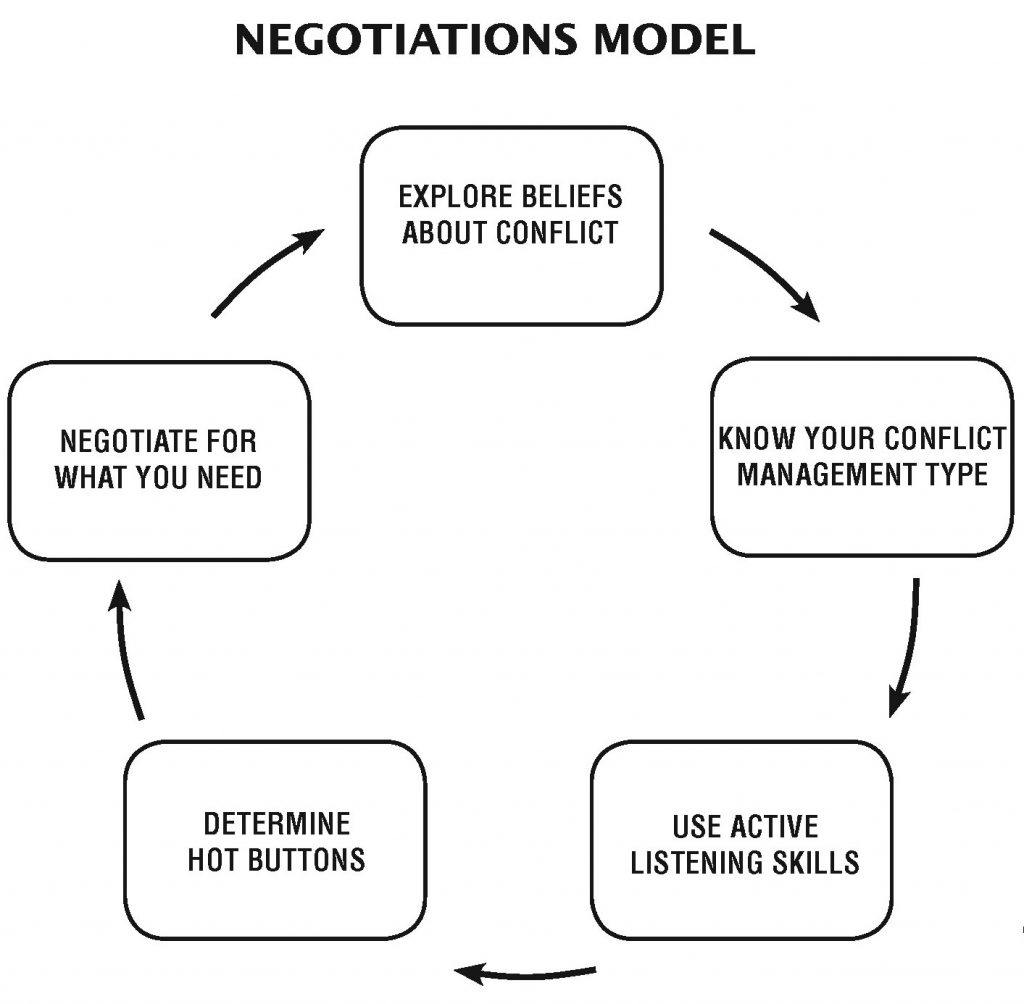What is My Conflict Management Style?
Excerpted from The Conflict Management Skills Workbook
By Ester R.A. Leutenberg and John Liptak, PhD
In many ways, conflict is a basic fact of life. We have all experienced conflict in our personal and professional lives. Because conflicts are disagreements resulting from people or groups having differences in attitudes, beliefs, values or needs, there will be times when conflict is inevitable. People experience differences in any relationship. That conflict exists is not a bad situation, as long as the conflict is managed effectively. Resolving conflicts can be beneficial and lead to growth and maturity. Outcomes of constructive conflict management will increase confidence in several aspects of life management:
- awareness that problems exist and need to be solved
- creative problem solving and decision making
- sense of well-being
- motivation and energy to take action
- implications / attitudes / responses of empathy and caring
- commitment to relationships
- impact of respect, trust and commitment.
Any conflict has the potential to be incredibly destructive to a relationship. Managed in the wrong way, it can lead to extreme differences between people that can quickly spiral out of control. Each person will experience this Negotiations Model based on their point of view in a conflict as they use the following format to help them resolve their issues / problems:

The following are types of conflict management styles. Read the short description of each style and then journal about the following three questions for each one.
What I like about this style.
What I don’t like about this style.
When does this style work, or not work?
Compromising
People with a Compromising Conflict Management Style try to find a solution that will partially satisfy everyone. This is often called the middle-ground approach because participants are willing to negotiate and come up with a compromise in the situation in which both people feel satisfied. They may also be willing to sacrifice the compatibility of their relationship with others in order to reach an agreement. They give a little to get a little, and they believe that both sides should make concessions in order to reach a resolution. They have discovered that it is important to back off from some issues in order to gain on other issues.
Competing
People with a Competing Conflict Management Style attempt to achieve their goals at all costs and as quickly as they possibly can. They take a firm stand and know what they want. They usually insist that the other people let them have their way, regardless of how much it affects their relationships with others. They operate from a position of power and are usually more concerned with having their way than with the feelings of others. No matter what the cost, winning is the most important thing for them. The use of this style can leave people feeling unsatisfied and resentful.
Avoiding
People with an Avoiding Conflict Management Style usually are willing to give up their own goals to maintain relationships with other people. They would rather hide from and ignore conflict than resolve it. They may give up personal goals and display passive behavior creating a personal loss situation. To do so, they generally avoid conflicts within important relationships. They may avoid other conflicts by physically removing themselves from the environment or by not coming into contact with the others who represent the potential for conflict. They may avoid others psychologically by not speaking or by ignoring them and another conflict situation, and subsequently, the conflict often goes unresolved.
Giving-In
People with a Giving-In Conflict Management Style usually give up their personal and professional goals so that other people can achieve their goals. They usually value their relationships with others so much that they attempt to smooth over the situation and give them their way. For them, the goal is often of no importance but the relationship with the others is of high importance. By giving in, they avoid the risk of a confrontation so they can continue to get along with the other people.
Collaborating
People with a Collaborating Conflict Management Style tend to want to meet the needs of all people involved in the conflict. They can be highly assertive, but are more than willing to cooperate effectively and acknowledge the importance of everyone involved. They are interested in bringing together a variety of viewpoints to get the best possible solution for everyone. They want all sides to be satisfied. They support open discussions, brainstorming and creative problem solving to come to a consensus.
Please enjoy these three conflict management worksheets and exercises:
Conflict Management Quotations
Conflict Management Process Steps
Causes of Conflict
